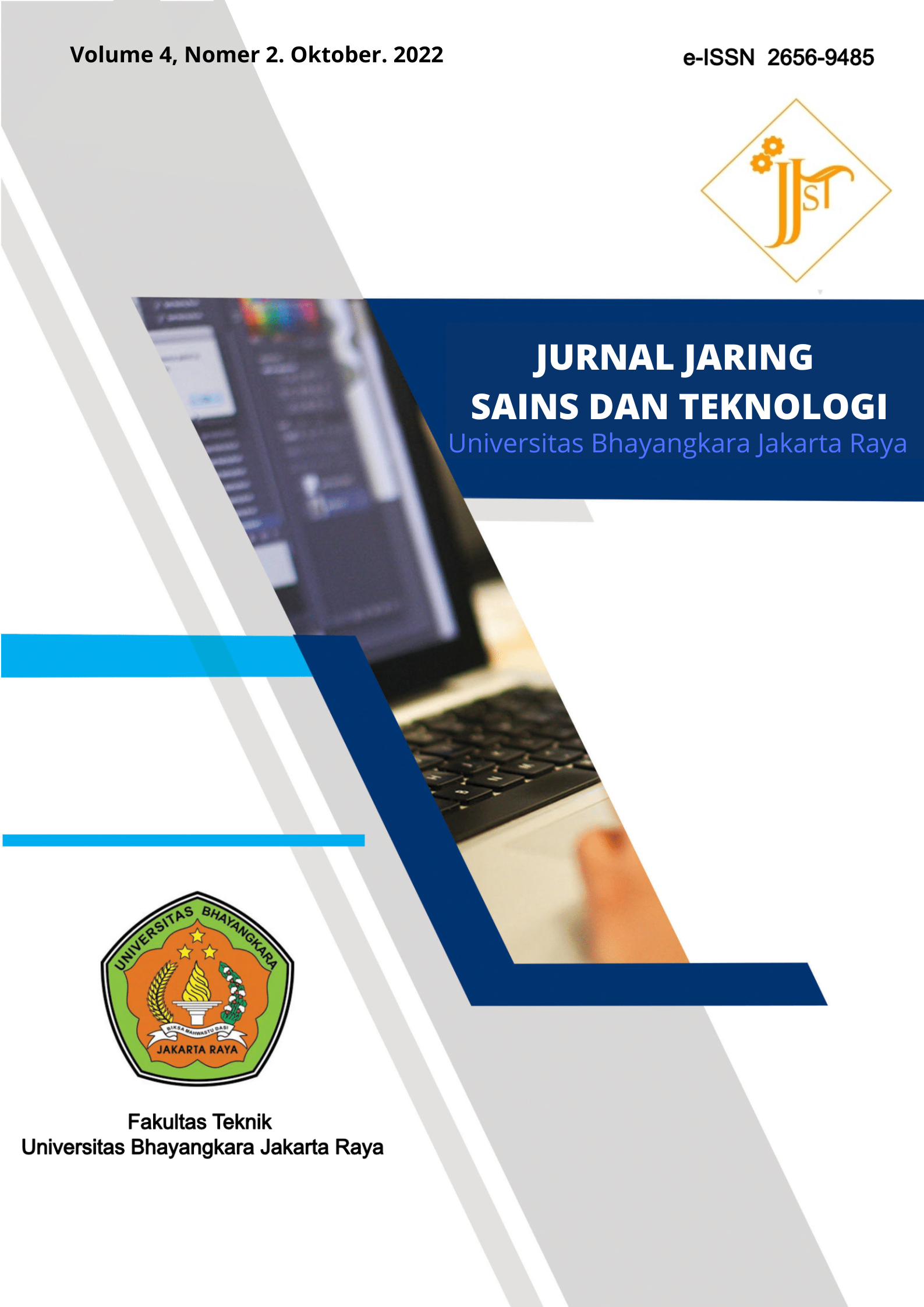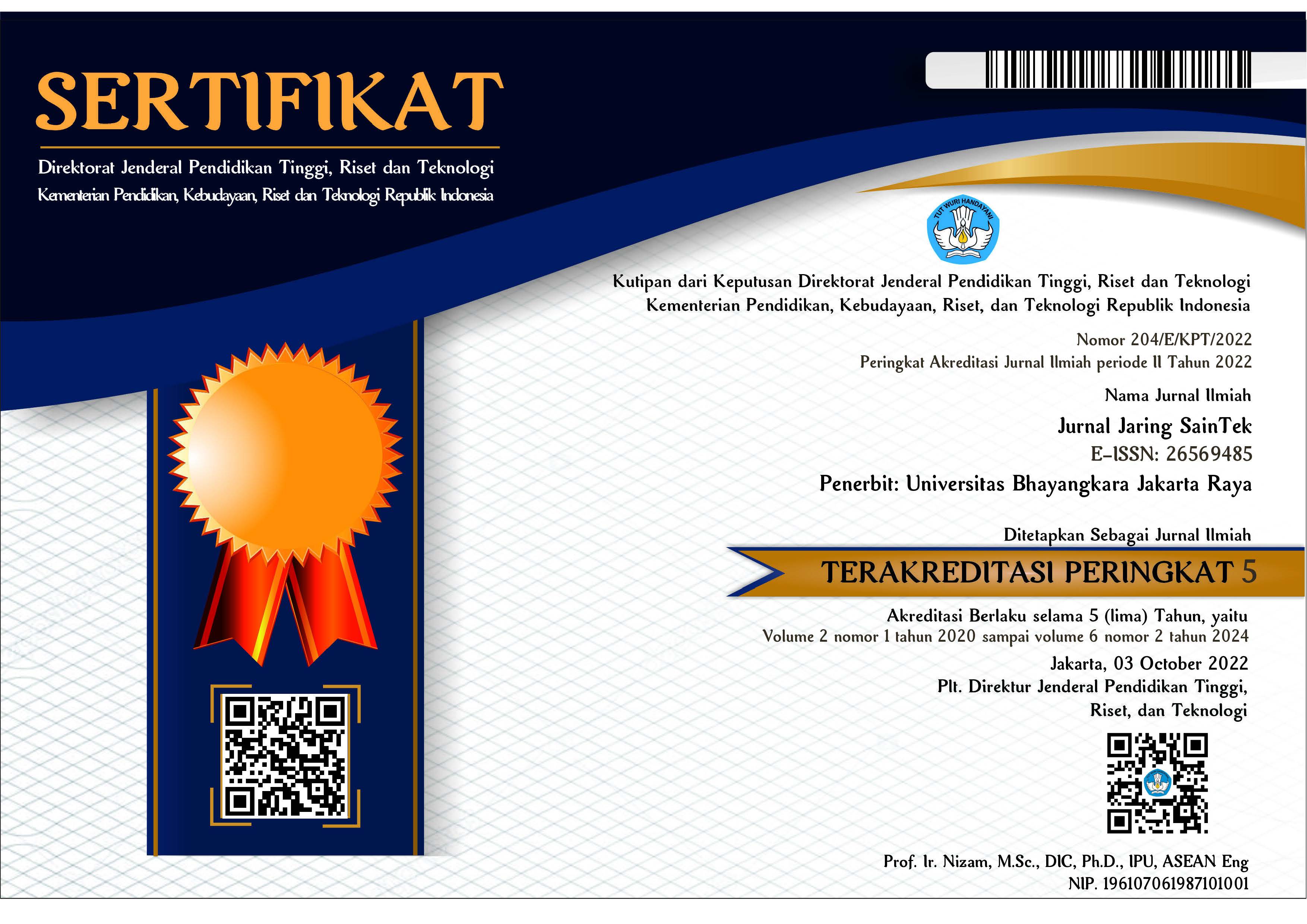Potensi Pemanfaatan Limbah Pasar Kubis-Kubisan (Brassica Oleracea L), Pisang (Musa Paradisiaca), Dan Umbi Akar (Tuber Rhizogenum) Sebagai Bahan Baku Energi Terbarukan Biogas
DOI:
https://doi.org/10.31599/j9gs5452Keywords:
Biogas, C/N, FTIR, Waste.Abstract
One form of energy that can overcome reduced energy sources is biogas obtained through the cooking process using market waste such as cabbage, bananas and root tubers with EM4 bioactivator. This study aims to determine the C/N ratio, the volume of methane gas, and the chemical composition of the gas as measured by the ECOM J2KN gas analyzer and the FTIR Spectro. Based on the results of the study, the optimum C/N ratio for the quickest time of 7 days for raw materials for cabbage, bananas, root tubers were 14.5; 10.6 and 23.9. The volume of methane (ml) obtained were 151 ml, 186 ml, and 289 ml. The mixture of the three raw materials with and without the EM4 bioactivator obtained methane gas volumes of 171 and 143. The main chemical composition of biogas detected on the J2KN ECOM tool was Methane (CH4) 55.81%. Carbon Dioxide (CO2) 14.46%, and Oxygen (O2) 17.73%. The chemical gas composition with the CH group function was obtained at a wavelength of 2933.73 cm-1. These results indicate that vegetable waste from cabbage, bananas, and root tubers can be used as raw material for biogas.
Downloads
References
Abdulkareem, A. S. (2005). Refining Bio-Gas Produced from Biomass: An Alternative to Cooking Gas. https://www.researchgate.net/publication/26446264
Ariyanto, T., Cahyono, R. B., Vente, A., Mattheij, S., Millati, R., Sarto, Taherzadeh, M. J., & Syamsiah, S. (2017). Utilization of fruit waste as biogas plant feed and its superiority compared to landfill. International Journal of Technology, 8(8), 1385–1392. https://doi.org/10.14716/ijtech.v8i8.739
BAPPENAS. (2021). Food Loss And Waste Di Indonesia: Pembangunan Rendah Karbon.
Deep Singh, A., Gajera, B., & Sarma, A. K. (2022). Appraising the availability of biomass residues in India and their bioenergy potential. Waste Management, 152, 38–47. https://doi.org/10.1016/j.wasman.2022.08.001
European Commission. (2018). A Clean Planet for all: A European strategic long-term vision for a prosperous, modern, competitive and climate neutral economy.
Felix, A. S., Sbu, P., & Ikhsan, D. (2012). PEMBUATAN BIOGAS DARI SAMPAH SAYURAN. In Jurnal Teknologi Kimia dan Industri (Vol. 1, Issue 1). http://ejournal-s1.undip.ac.id/index.php/jtkiTelp/Fax:
Golmakani, A., Ali Nabavi, S., Wadi, B., & Manovic, V. (2022). Advances, challenges, and perspectives of biogas cleaning, upgrading, and utilisation. Fuel, 317. https://doi.org/10.1016/j.fuel.2021.123085
Gupta, P., Kurien, C., & Mittal, M. (2022). Biogas (a promising bioenergy source): A critical review on the potential of biogas as a sustainable energy source for gaseous fuelled spark ignition engines. International Journal of Hydrogen Energy. https://doi.org/10.1016/j.ijhydene.2022.11.195
Hilmi, N. A. M., Zakarya, I. A., Gunny, A. A. N., Izhar, T. N. T., Zaaba, S. K., Samah, M. F., Daud, Z. A. A. M., & Beson, M. R. C. (2023). Co-digestion of food waste with cow dung by anaerobic digestion for biogas production. IOP Conference Series: Earth and Environmental Science, 1135(1), 012034. https://doi.org/10.1088/1755-1315/1135/1/012034
Hosseini, S. S., Azadi Tabar, M., Vankelecom, I. F. J., & Denayer, J. F. M. (2023). Progress in high performance membrane materials and processes for biogas production, upgrading and conversion. Separation and Purification Technology, 310, 123139. https://doi.org/10.1016/j.seppur.2023.123139
Keerthana Devi, M., Manikandan, S., Oviyapriya, M., Selvaraj, M., Assiri, M. A., Vickram, S., Subbaiya, R., Karmegam, N., Ravindran, B., Chang, S. W., & Awasthi, M. K. (2022). Recent advances in biogas production using Agro-Industrial Waste: A comprehensive review outlook of Techno-Economic analysis. In Bioresource Technology (Vol. 363). Elsevier Ltd. https://doi.org/10.1016/j.biortech.2022.127871
Kiehbadroudinezhad, M., Merabet, A., Ghenai, C., Abo-Khalil, A. G., & Salameh, T. (2023). The role of biofuels for sustainable MicrogridsF: A path towards carbon neutrality and the green economy. In Heliyon (Vol. 9, Issue 2). Elsevier Ltd. https://doi.org/10.1016/j.heliyon.2023.e13407
Nabila, S. N., & Hendriyanto, O. (2021). Produksi Biogas dari Kombinasi Kotoran Kambing dan Limbah Ikan dalam Biodigester Anaerob. Envirous Teknik Lingkungan, 2(1), 88–95.
Pandebesie, Elina, S., & Rayuanti, D. (2013). Pengaruh Penambahan Sekam Pada Proses Pengomposan Sampah Domestik. Jurnal Lingkungan Tropis, 6(1), 31–40.
Sanjaya, G. M. (2012). Biokonversi Sampah Organik Pasar Menjadi Biogas Menggunakan Starter Effective Microorganisms (EM4) Bioconversion of Organic Waste into Biogas by Using Effective Microorganisms Starter (EM 4 ). Jurnal Sains Dan Matematika, 1(1), 17–19.
Santoso, A. (2010). Produksi Biogas dari Limbah Rumah Makan Melalui Peningkatan Suhu dan Penambahan Urea Pada Perombakan Anaerob [Skripsi]. In Skripsi. Universitas Sebelas Maret.
Siddiqui, Z., Horan, N. J., & Anaman, K. (2012). Optimisation of C:N Ratio for Co-Digested Processed Industrial Food Waste and Sewage Sludge Using the BMP Test. International Journal of Chemical Reactor Engineering, 9(1). https://doi.org/10.1515/1542-6580.2327
United Nations Environment Programme. (2021). FOOD WASTE INDEX REPORT 2021. United Nations Environment Programme.
Vargas-Soplín, A. de J., Prochnow, A., Herrmann, C., Tscheuschner, B., & Kreidenweis, U. (2022). The potential for biogas production from autumn tree leaves to supply energy and reduce greenhouse gas emissions – A case study from the city of Berlin. Resources, Conservation and Recycling, 187. https://doi.org/10.1016/j.resconrec.2022.106598
Wilson, D. C. (David C., United Nations Environment Programme, & International Solid Waste Association. (2015). Global waste management outlook.
Yang, S., Luo, F., Yan, J., Zhang, T., Xian, Z., Huang, W., Zhang, H., Cao, Y., & Huang, L. (2023). Biogas production of food waste with in-situ sulfide control under high organic loading in two-stage anaerobic digestion process: Strategy and response of microbial community. Bioresource Technology, 373, 128712. https://doi.org/10.1016/j.biortech.2023.128712
Zia, M., Ahmed, S., & Kumar, A. (2022). Anaerobic digestion (AD) of fruit and vegetable market waste (FVMW): potential of FVMW, bioreactor performance, co-substrates, and pre-treatment techniques. In Biomass Conversion and Biorefinery (Vol. 12, Issue 8, pp. 3573–3592). Springer Science and Business Media Deutschland GmbH. https://doi.org/10.1007/s13399-020-00979-5









